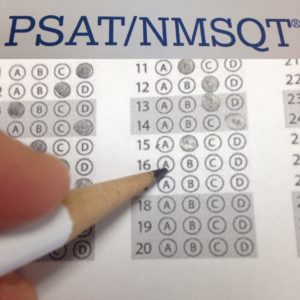WHY PREP FOR THE PSAT?

By Wendi Ostroff
When people think of the PSAT, they think of it as a practice test for the SAT or, they might say it’s for students to qualify for the National Merit Scholarship. While both of these are true, what’s important is for students to feel prepared and confident on test day, which is mid-October. The PSAT (Preliminary Scholastic Aptitude Test) may be the first standardized test a student takes in high school. Many students feel anxious when taking tests, so why not review what to expect and sharpen their skills?
The PSAT, which was revised in October 2015, is now 2 hours and 45 minutes. It is comprised of three sections: Reading (60 minutes), Writing and Language (35 minutes), and Math (70 minutes). It is all multiple choice, with the final 6 questions in the math section being free response, and a total of 139 questions. There is no penalty for guessing and no essay component. The PSAT is excellent practice for both the SAT and ACT, it gives you a chance to qualify for several scholarships, and while not intended for college admissions, it can help you stand out to colleges. Many colleges will see lists of high scoring students and encourage them to apply to their school. Note that the PSAT score is not submitted on a college application.
The PSAT is more of a critical thinking test that aims to measure a student’s reasoning skills, ability to find evidence in reading passages, knowledge of grammar, and three areas of math content: Heart of Algebra, Problem Solving and Data Analysis, and Passport to Advanced Math.
Preparing for the PSAT gives students a sense of the format, directions, question types, and time limits that will also be present for future standardized tests. If a student were to take a test in Chemistry, for example, they would spend some time studying, so why not review the content on the PSAT? The best way to do well on the PSAT is to pick up a prep book, take a short, intensive course like the one offered by California Learning Center, and go online to https://collegereadiness.collegeboard.org/psat-nmsqt-psat-10 and practice, practice, practice. Read from a variety of well-written texts, including the news, novels, editorials, and other types of reading that will help build comprehension and vocabulary. All of this combined will build confidence and reduce stress when taking the actual test.


